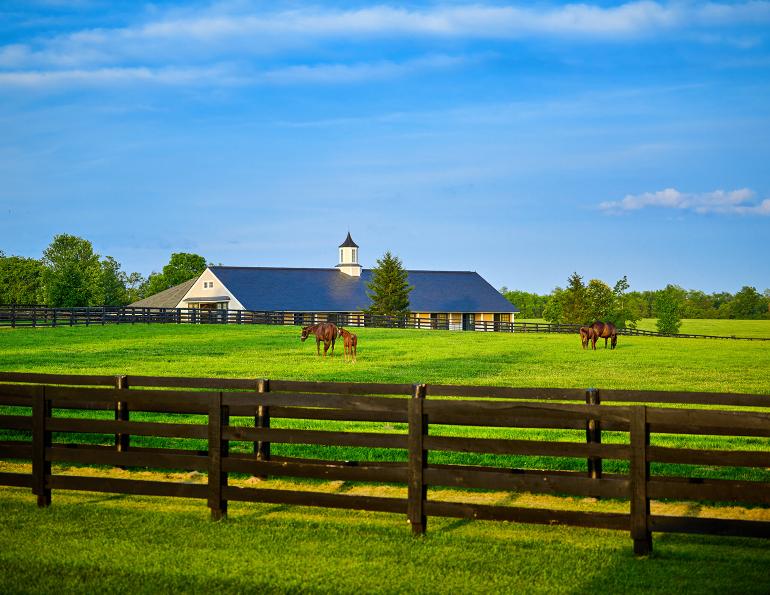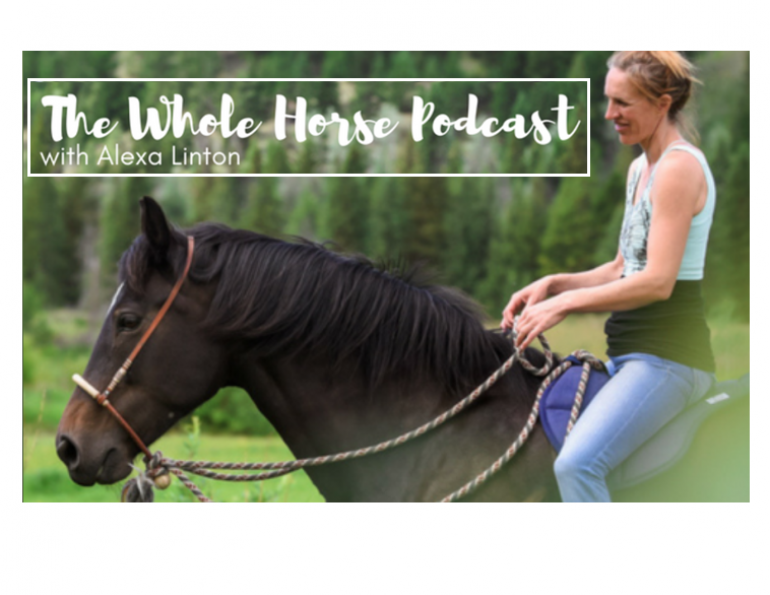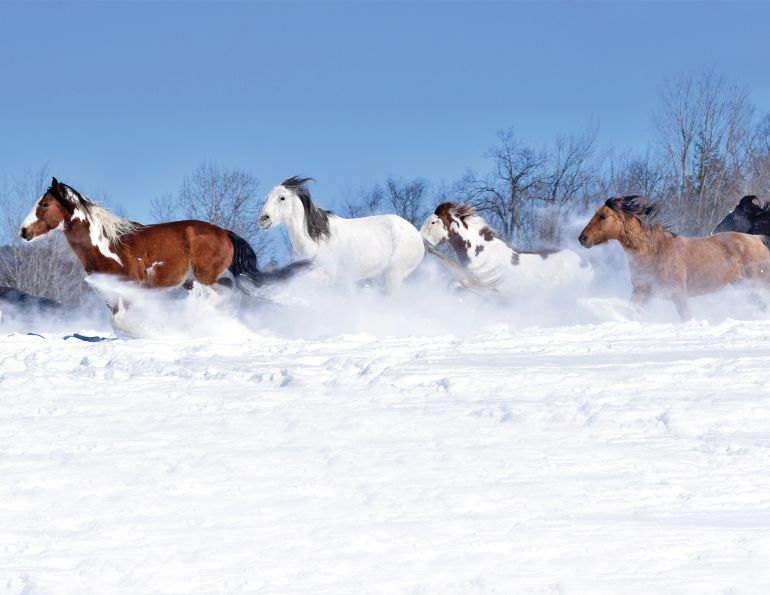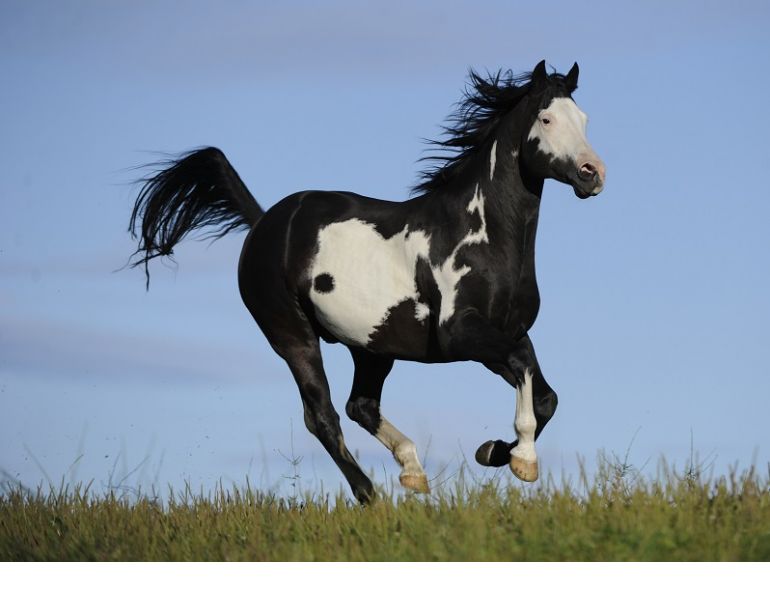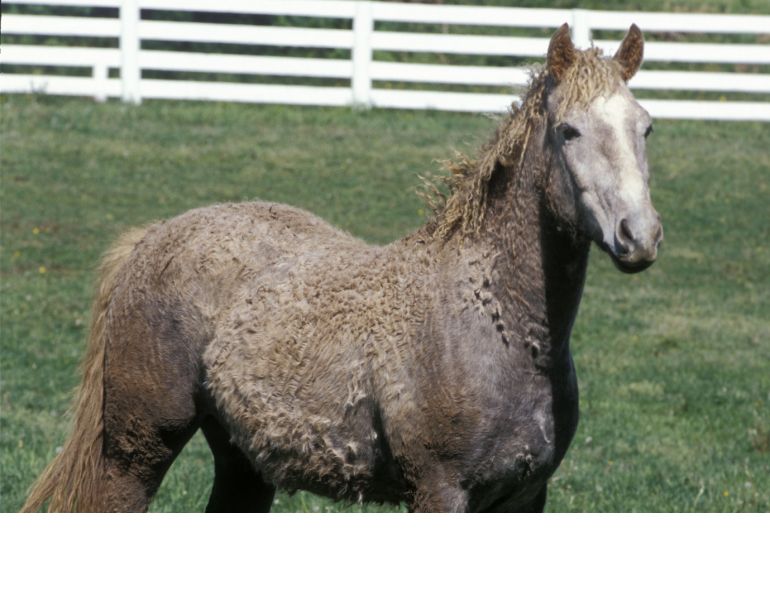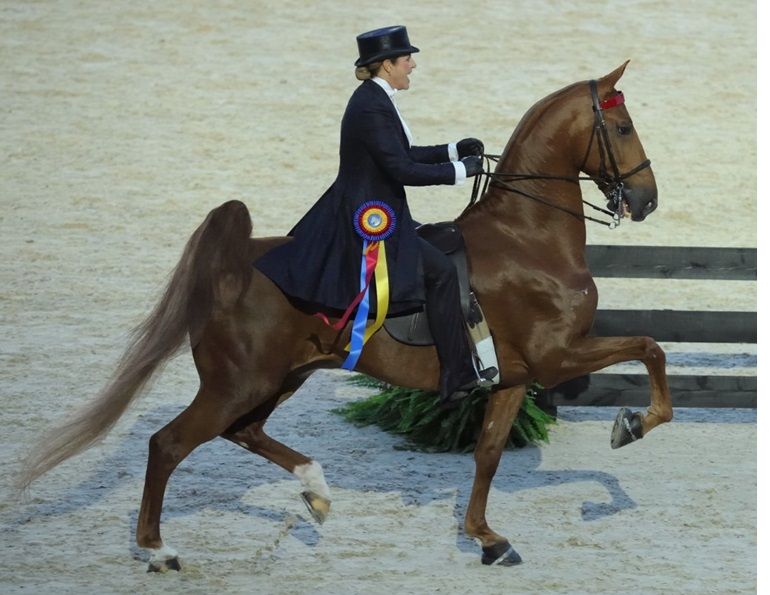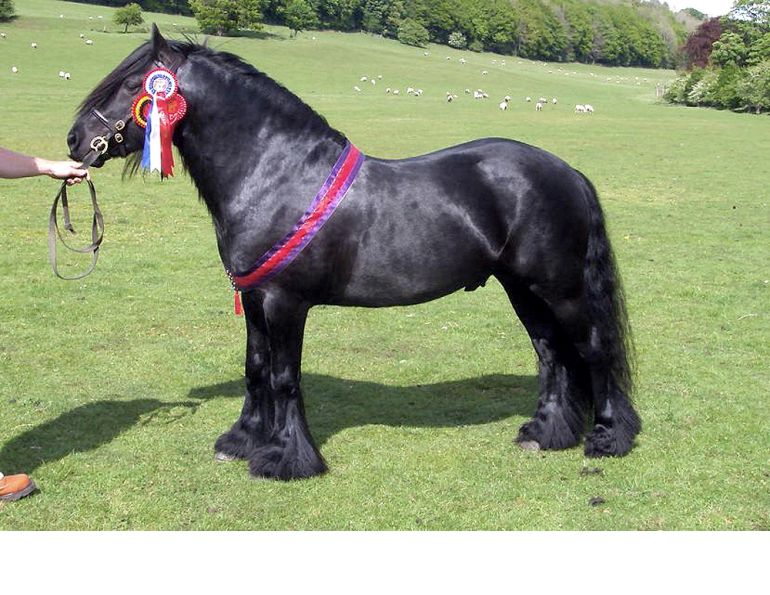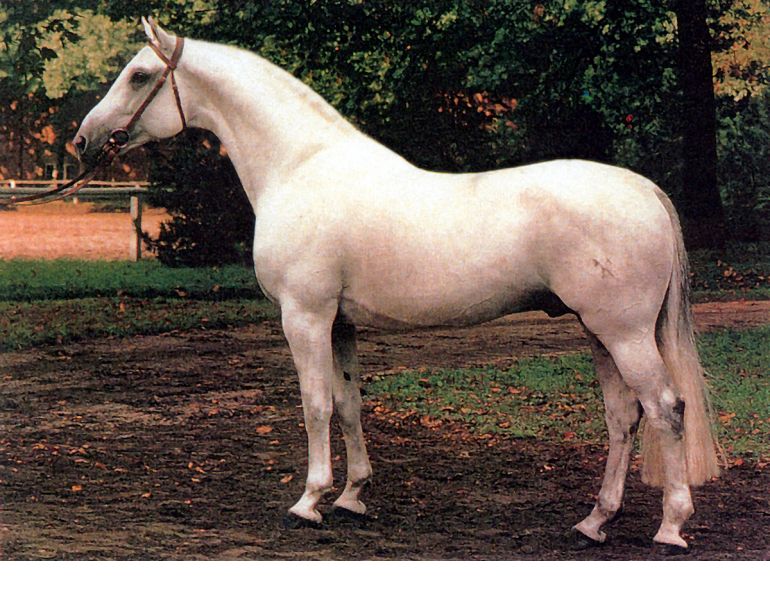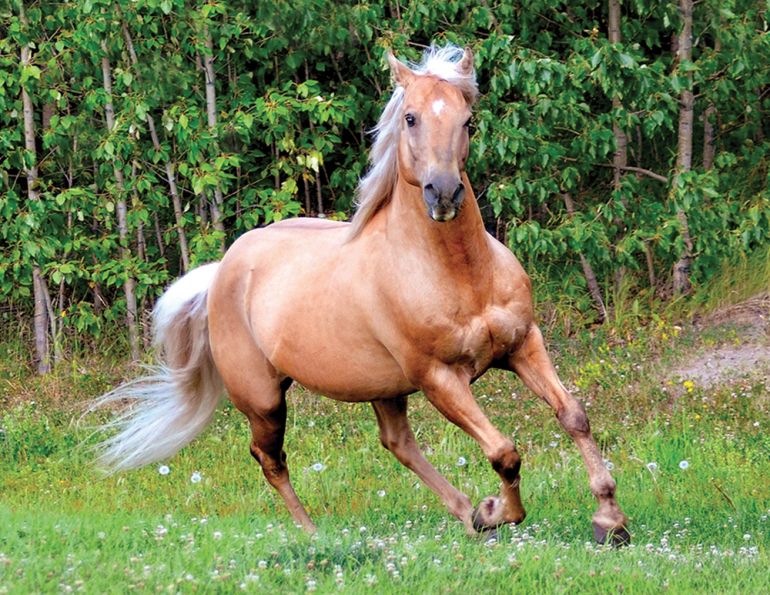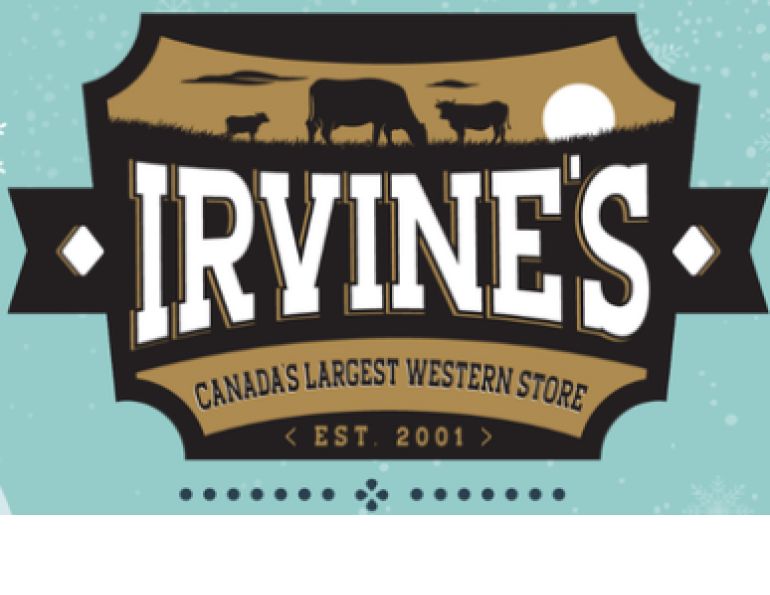By Melanie Huggett
This article was published in May 2012.
See below for article sidebar - The Price to Pay
Practically everyone has heard of the Quarter Horse.
The most populous breed worldwide, as of 2008 there were 3,189,605 Quarter Horses registered with the American Quarter Horse Association (AQHA), making it the largest breed registry in the world.
Early History
While typically thought of as a Western ranch horse, the Quarter Horse’s beginnings were in racing, a sport they still compete in today. Named for their superb ability to sprint a quarter mile, the Quarter Horse was originally developed in the eastern United States. “Chickasaw” mares, likely of Spanish descent, from the Chickasaw native tribe were crossed with imported Celtic studs, such as the Galloway, in colonial Virginia and the Carolinas beginning in the 1600s.
Later, English Thoroughbreds were imported and crossed with these early horses. Two particularly influential early sires were the English Thoroughbred Janus, foaled in 1746 and imported to Virginia in 1752; and American bred Sir Archy, also a Thoroughbred, who became known as “America’s Godolphin” for his great influence on the Thoroughbred breed.
These new American bred sprinting horses became so good at short races they became known as “Celebrated Quarter of a Mile Race Horses.” The races, usually match races, were not held on tracks, but on straight runs wherever there was suitable space — often this was down the town’s main street.
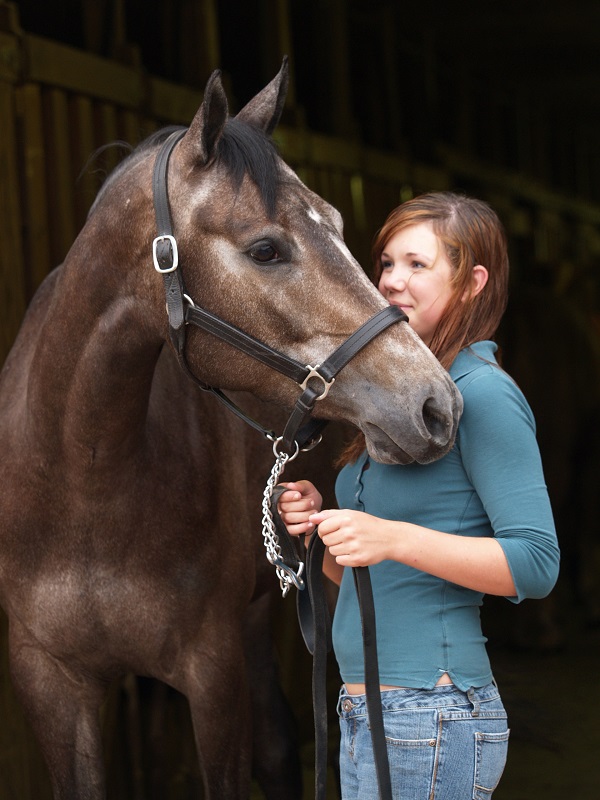
The Quarter Horse has become the most popular horse worldwide, with over 3,100,000 registered with the AQHA. Photo: Pam MacKenzie
As the pioneers moved west, so did quarter mile racing and its horses. At the end of the 18th century, short races lost much of their popularity in the east to long races, and so the primary development of the Quarter Horse became centered in Kentucky, Tennessee, Missouri, and Illinois, where short races were still the preferred type. Local mares, often Mustangs, were crossed with the best racing stallions to produce an even tougher, sturdier, compact horse that was not only an even better sprinter, but also an excellent working and cow horse.
A famous stud of this era is Steel Dust, foaled in 1843 in Kentucky and brought to Texas in 1844. He was blood bay, 15 hands high, and weighed 1200 pounds. Tracing back to Sir Archy, Steel Dust made a name for himself by winning against a horse named Monmouth, a favourite of the day. From this race and many other wins, Steel Dust became exceptionally famous — so famous that his offspring were often called “Steel Dust horses” and the AQHA was almost called the “American Steel Dust Association.”
Peter McCue
While Steel Dust contributed to all the modern Quarter Horse families, the uncontested most influential sire of the Quarter Horse breed is Peter McCue. Foaled in 1895 on the Little Grove Stock Farm in Petersburg, Illinois, he was registered as a Thoroughbred by his owner Sam Watkins so that he could race on official tracks, but he was not truly a Thoroughbred.
Though his papers listed the Thoroughbred Duke of the Highlands as his sire, his true sire was Dan Tucker. He stood 16 hands and weighed 1430 pounds.
At two years old, Peter McCue made his debut on the track. He was a fast horse. Many say he ran a quarter mile in 21 seconds flat. Watkins stood Peter McCue until 1907 and the bay stallion went through two more owners before his death in 1923 at the age of 28. Though he only sired 44 horses registered with the AQHA, they are some the greatest Quarter Horse sires in the breed. His sons include Harmon Baker, Buck Thomas, A D Reed, Badger, Old Red Buck, Chief, Jack McCue, John Wilkins, and Hickory Bill. His grandsons are even more impressive: Old Sorrel, Joe Hancock, Nick, Midnight, and Barney Owens. Of the 11,510 Quarter Horses registered in the AQHA in 1948, 2304 of them traced to Peter McCue through the sire line.
For his great contribution to the breed, Peter McCue was inducted in the AQHA Hall of Fame in 1991.

Peter McCue, foaled in 1895, is considered the most influential sire of the modern Quarter Horse. He traced back to Steel Dust and Shiloh, another top sire of Steel Dust’s era. Photo: Courtesy of AQHA
The American Ranch Horse
Though the most notable sires, such as Steel Dust and Peter McCue, were race horses, the breed quickly became well known for its superior ability to work cows on the ranches of the American west.
Not only did these horses have calm temperaments and excellent “cow sense,” they were hardy enough to do a full day’s work, with bodies adept at the fast stops, starts, and spins needed for working cattle. Beginning in 1850s, “Steel Dust” Quarter Horses became the primary horse for Texas cattleman, and the long drives that would take cattle, horses, and horsemen west to California and as far north as Canada.

Quarter Horses have been the primary mount for cattlemen since the 1850s. Ranches, in turn, have played a vital role in their development since that time. Photo: ChristinaHandleyStock.com
In the early 1900s, ranches such as the famous King Ranch in Texas began selectively breeding their cattle and improving their horse herds as well. Finding full Thoroughbreds too nervous and delicate for ranch work, King Ranch set out to breed more traditional Quarter type horses. They found the best cow horse the ranch would own in Old Sorrel, who was purchased in 1916. The King Ranch began a line breeding program based on the stud, who was bred to the ranch’s best working mares.
The Association
While a few men had recorded pedigrees of their horses, most were based on memory. Pedigrees from the 1850s to early 1900s were especially muddy. A studbook for what was fast becoming America’s favourite racing and ranch horse was not created until the 1940s.
The creation of the AQHA was spearheaded by Robert Denhardt, a Texan who worked at Texas A&M University. He had begun researching Steel Dust horses and soon began compiling information and pedigrees on the breed, forming a history of the Quarter Horse and foundation stock, which has been published in many of his books.
In March 1939 at the Southwestern Exposition and Fat Stock Show, Denhardt held a meeting with several breeders, where he presented his idea to form a breed association. A year later, on March 14 to 15, 1940, a two-day meeting with 75 breeders and industry leaders would culminate with the creation of the AQHA, whose purpose was “to collect, record, and preserve the pedigrees of Quarter Horses in America, to publish a stud book and registry, and to stimulate any and all other matters such as may pertain to the history, breeding, exhibiting, publicity, sale, or improvements of this breed in America.” A charter was presented, directors were elected, and bylaws adopted. Bylaws included registration requirements based on conformation, pedigree, and performance in both shows and races.
The first horse to be registered with the AQHA was Wimpy (Wimpy P-1 in the records), bred by the King Ranch. Wimpy was by Solis and out of Panda, who were half brother and sister by Old Sorrel. The honour of being the first registered horse in the AQHA studbook was by virtue of being named Grand Champion at the 1941 Southwestern Exposition and Fat Stock Show in Fort Worth, Texas.
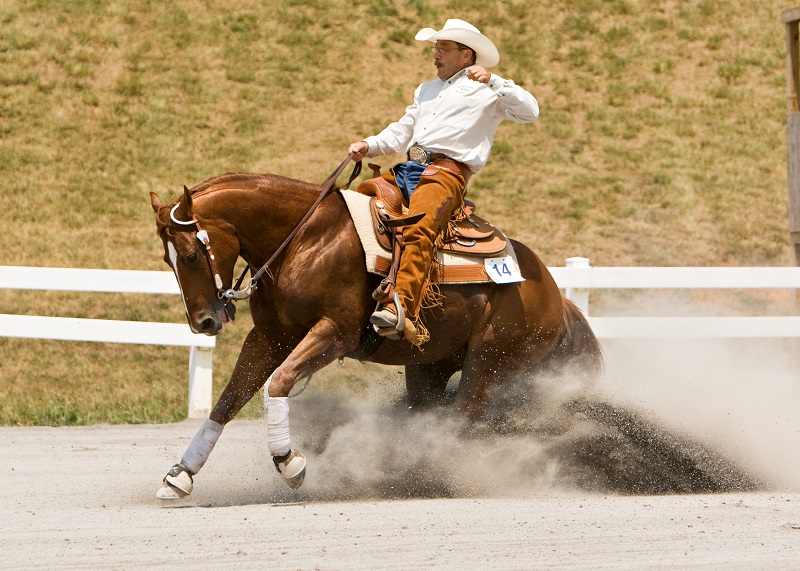
Quarter Horses are extremely athletic, able to do fast stops, starts, and turns. AQHA shows feature the versatility of the breed with over 30 classes to choose from. Photo: ChristinaHandleyStock.com
The Bulldog Horse
The meeting in March 1940 also set out guidelines for the ideal conformation of the Quarter Horse. The head was to be short and broad, with large jaws and small ears. The neck medium in length, with sloping shoulders, and medium-high withers.
The chest should be deep and broad, with wide-set forelegs. Short cannon bones and well muscled forearms should rest on medium length pasterns and sound feet. The back should be short, the barrel deep, with well sprung ribs. The rear quarters are perhaps the most prominent feature of the Quarter Horse and give him his great driving power: they should be broad, deep, and heavy, with great muscling down to the hock.
Denhardt compared the conformation of the short-racing Quarter Horse to the long-racing Thoroughbred in his book Quarter Horses: A Story of Two Centuries: “The Quarter Horse carries his head low, which makes for sure-footedness and rough going; because of thick layers of muscles, he does not have lofty or thin-peaked withers; he is still superior in muscular development of hindquarters and still ‘hams down.’ His tail is somewhat lower than the point of the hips, and he stands higher behind than in front. Such description of type, that has remained consistent for almost two hundred years, speaks well for the breed and, indeed, points up characteristics that create his utility.”
Today the AQHA “does not distinguish horses by phenotype (outward appearance),” said Jennifer Hancock, Director of Marketing at the AQHA. “Horses are eligible to be part of the American Quarter Horse Association registry based on their bloodline and ancestry.”
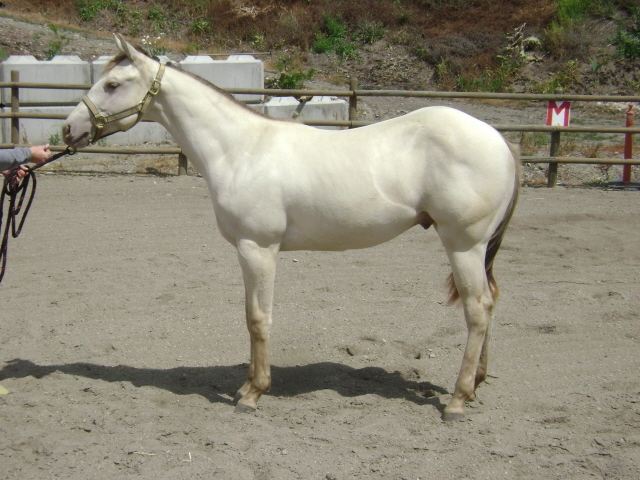
Quarter Horses must be one of 16 colours recognized by the AQHA. Grullo champagne stallion My Beau Vanzi of Colour V Ranch carries the rare, recently discovered champagne gene dilution. Photo: Courtesy of Cheryl Van Immerzeel
There are 16 colours recognized by the AQHA: sorrel, bay, black, brown, grey, chestnut, palomino, buckskin, dun, red dun, grullo, red roan, blue roan, bay roan, perlino, and cremello. Perlino and cremello horses have only been eligible for registration since 2003. Sorrel is the most common colour seen in the breed.
There have been debates over whether horses with mostly Thoroughbred breeding should be allowed in the registry since the beginning. Despite some contest, the AQHA has always remained an open studbook. Horses with one registered Quarter Horse parent and one Thoroughbred parent (registered with the Jockey Club) can be registered in an appendix of the AQHA registry. This is why Quarter Horse-Thoroughbred cross horses are commonly called “appendix.” Appendix horses are permitted to show, but their offspring are not eligible for full registration; however, should an appendix earn enough points in shows or races, they can move from the appendix to the main registry, making their offspring eligible for full registration.
Many breeders argue that this continual infusion of Thoroughbred blood has altered the Quarter Horse from its traditional bulldog type. Many “Foundation” Quarter Horse registries have been started that register and promote only horses with bloodlines tracing to mostly foundation Quarter Horse stock.
However, exceptions have been made since the beginning for horses whose performance or bloodlines proved they were of Quarter Horse type, despite less-than-ideal conformation. This decision by the founders of the AQHA to allow other than “dyed-in-the-wool Steeldusts” in the registry “dictated the type of organization the AQHA would become in the future. Had it not been for that decision (to register good horses of near Quarter-type), it is extremely doubtful if the association could have reached its present size or its international importance,” Denhardt wrote in Foundation Sires of the American Quarter Horse.
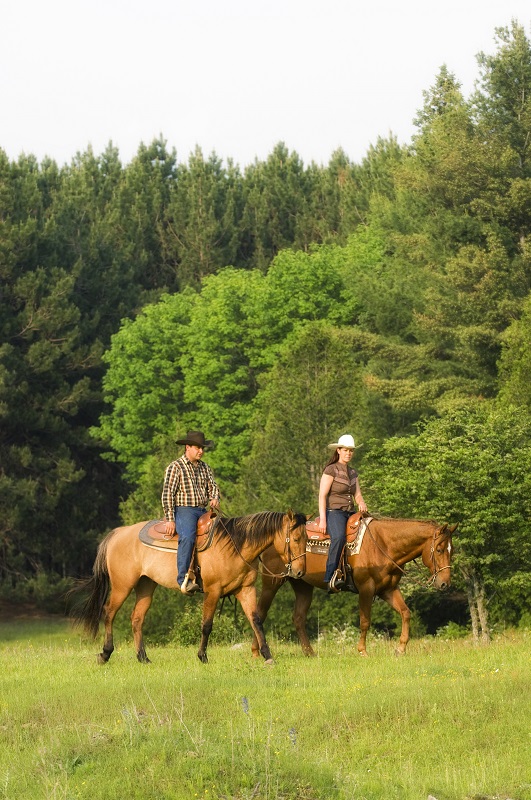
Quarter Horses make fine recreational mounts for trail riding or pleasure riding. Photo: ChristinaHandleyStock.com
The Most Versatile Horse
Today, Quarter Horses can be seen doing practically every equine event and discipline, and this ability to adapt and perform in a variety of events is perhaps what has made them so popular worldwide.
“No matter what your interest is, the Quarter Horse seems to be able to do it,” said Hannah, a member of the Maritime Quarter Horse Association (MQHA) who has been riding and showing Quarter Horses for over 20 years.
This versatility comes not only from their conformation and athleticism, but also from their mind. “(Quarter Horses) have the mental capacity to do a lot of different things,” the MQHA member continued. “They are very trainable and easy going.”
“The American Quarter Horse’s intelligence and great temperament are two of the characteristics that help the breed excel in many different disciplines,” said Hancock.
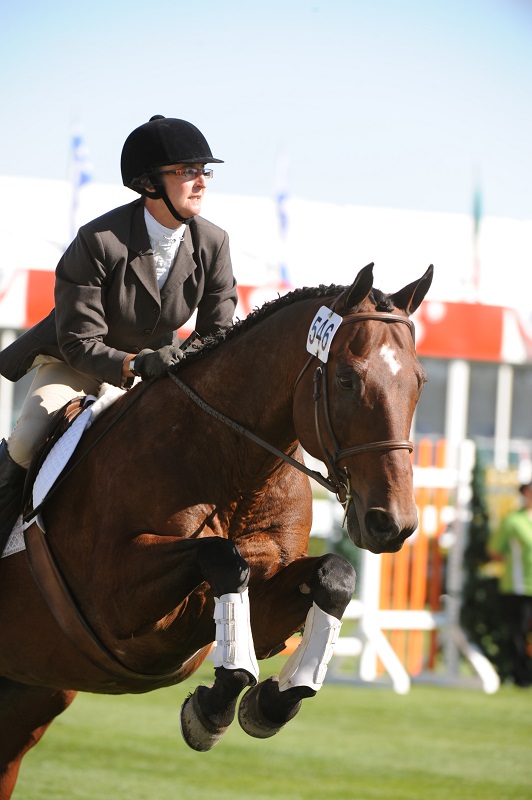
The Quarter Horse is extremely versatile, competing in practically every discipline and event. Photo: Robin Duncan Photography
Della Cryderman, who runs Cryderman Quarter Horses in Murillo, Ontario, agreed: “I believe that the Quarter Horse has become so popular because of their easy going personalities, their trainability, and their athleticism. The Quarter Horse is especially easy to train compared to some other breeds.”
AQHA breed shows showcase the versatility of the breed with a variety of classes, which range from Western pleasure and trail, to pleasure driving and working hunter, halter and showmanship, barrel racing and roping, and more.
Dressage is one of the AQHA's long list of over 30 recognized classes. While most think of Warmbloods, not Quarter Horses, doing dressage, many do practice and compete in the sport. “AQHA’s 300,000-plus membership directs its governance and our members wanted the event added,” said Hancock about the addition.
Most Quarter Horses on the AQHA circuit will show in more than one type of class. Some, however, are being developed for more specific disciplines. Cryderman, who trains horses and riders for the AQHA circuit, explains more: “these (all-around show) horses have been produced out of the original foundation horses that were always considered a very versatile, all-around horse that could do anything. However, with the popularity forming within each discipline, the horses are being refined into the ideal for that discipline. I believe that many breeders are choosing to refine, define, and embody one specific type of horse that will be the best that it can be at its predetermined discipline it was bred for.”
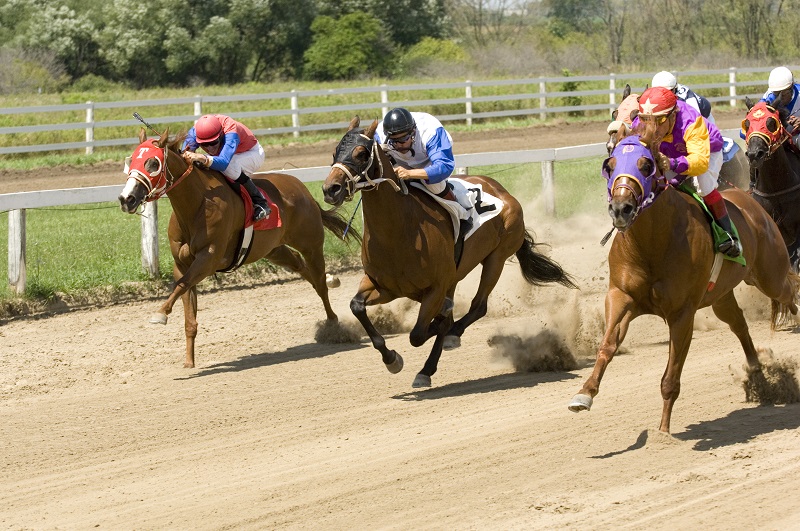
The Quarter Horse’s origins trace back to sprint racing, a sport that the breed still excels at today. Photo: ChristinaHandleyStock.com
In addition to breed shows, Quarter Horses dominate many other association events, including those from the National Reining Horse Association, National Cutting Horse Association, National Reined Cow Horse Association, National Snaffle Bit Association, National Barrel Horse Association, and others.
Sprint racing is still extremely popular, and the Quarter Horse still shines as the best in this sport. In 2008, there were over 16,000 Quarter Horse starters for purses totaling over $125,500,000.
And of course, the Quarter Horse makes a fine recreational mount for trail riding or pleasure riding.
Their easy going temperaments and versatility make them suitable for both children and adults. “A coach I know has a great saying about Quarter Horses,” said the MQHA member, “The kid can ride them, the mother can hold them, and the dad can load them.”
Quarter Horses in Canada
The first registered Quarter Horse to make his home on Canadian soil was the dun stallion Sleepy Cat, imported by Jac and Allie Streeter of Stavely, Alberta in 1942. Tracing back to Steel Dust, Sleepy Cat foaled over 200 offspring during his life in Alberta.
The list of top performing Canadian bred, owned, and trained Quarter Horses just gets better from there. With names like Peppy San, King Leo Bar, Crimson War, Smart Little Baggins, Diane Kilebar, The Great Whiz, and a host of others, it’s easy to see that Canada is no stranger to top stock.

A laid back temperament makes Quarter Horses wonderful mounts for amateurs and children, while their ease of training and athleticism appeals to top professionals. Photo: Pam MacKenzie
These days, Canadian Quarter Horse fans are seeing crimson — or rather, Krymsun. Quarter Horse stallion One Hot Krymsun was bred, born, and raised by Herb Best of New Glasgow, Nova Scotia. After Best brought the young colt to the 2000 All American Quarter Horse Congress to compete in the Yearling Lunge Line Futurity (where he was Reserve Champion), Rebecca Bailey of Oklahoma promptly fell in love with “Jet” and bought him. Since then, One Hot Krymsun has gone on to become the only three-time AQHA World Champion in Western Pleasure and a four time Congress Champion.
And his Canadian-bred kids are following in daddy’s footsteps. The Krymsun Kruzer, bred by Bernard More of Shawville, Quebec, became the 2009 AQHA Superhorse after earning enough points in seven events at the AQHA World Championship show, and was also named Most Valuable English Horse and Junior Working Hunter World Champion.
Another of Jet’s sons, TheWayTheWestWasOne, bred by Jane Cryderman of Goderich, Ontario, was the High Selling Horse at the 2008 AQHA World Show Sale.
Today, there are over 230,000 registered Quarter Horses in Canada and Alberta is home to the fifth largest population of Quarter Horses in the world, over 106,000, after the US states of Texas, Oklahoma, California, and Missouri.
This article was published in May 2012
The Price to Pay
By Melanie Huggett
Being the most popular horse in the world is not without its downfalls. The more horses that breed, the greater the chance for genetic mutations to occur; while these changes can be positive, they can also be extremely devastating (no species, perhaps, proves this more than humans). There are a number of genetic disorders that have surfaced in Quarter Horses:
- Hyperkalemic periodic paralysis (HYPP) — perhaps the most well known of the genetic diseases present in Quarter Horses, HYPP has been traced to the prolific halter stallion Impressive. HYPP causes uncontrollable muscle twitching and paralysis. It is a dominant gene, meaning only one parent needs to carry it for HYPP to be passed on to offspring. All horses with Impressive in their pedigrees must undergo genetic testing for HYPP, and the AQHA will not allow registration of horses with the homozygous form (H/H). Horses with the heterozygous form (N/H) can be registered, but can still pass on the gene to their offspring.
- Hereditary Equine Regional Dermal Asthenia (HERDA) — also known as hyperelastosis cutis, HERDA causes a collagen defect that causes skin layers to not fully bind together. The skin easily splits open and can even roll down the sides in extreme cases, so most horses with HERDA are euthanized. A recessive gene, both parents must carry the gene for it to pass on to offspring.
- Glycogen Branching Enzyme Deficiency (GBED) — This disease causes a lack of the enzyme necessary for storing glycogen, which is necessary for heart and skeletal muscle function, and leads to rapid death of foals. Both parents must carry the gene for it to be passed on to offspring.
- Equine polysaccharide storage myopathy (EPSM/PSSM) — a metabolic muscle disorder, EPSM or PSSM causes tying up. It is estimated to be present in six percent of the Quarter Horse population, and some horses may have the disease without showing any signs.
Thankfully, genetic tests have been developed for all of these conditions and these are available to horse owners and breeders for a small fee. Genetic testing is important so that, hopefully, these diseases can be eradicated from future generations of horses.
Related: Research Advances lead to New Genetic Tests for Horses
Related: AQHA's Dedication to Research and Success of the Five-Panel Test
Main photo: Courtesy of AQHA - In 1968, the AQHA commissioned Orren Mixer to paint the “ideal American Quarter Horse.” He has large, muscular hindquarters, a short back, sloping shoulders, medium length neck, and a short head with small ears.
This article originally appeared in the March 2010 issue of Canadian Horse Journal.




